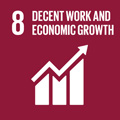- Docente: Stefano Mattioli
- Credits: 2
- SSD: MED/44
- Language: Italian
- Teaching Mode: Traditional lectures
- Campus: Bologna
- Corso: First cycle degree programme (L) in Orthopaedics techniques (cod. 8483)
Learning outcomes
At the end of the course, the students will know the general concepts of the Occupational Medicine. Particular attention will be devoted to the healthcare work environment.
Course contents
The course is divided into three parts (8 hours each).
Part A: introductory lectures that will focus on the general concepts and on the methods applied in the field of Occupational Medicine
- Introduction to occupational medicine (history, statistics, scientific framework, aims)
- Reference legislative frame. The role of the occupational physician.
- Classification of occupational risk factors (physical, chemical, biological agents, biomechanical and relational factors).
- Introduction to occupational toxicology and hygiene
Part B: Occupational diseases
- Work-related muscoloskeletal disorders
- Occupational cancer
- Stress-related diseases (bullying, mobbing, and burnout)
- Work, fertility and pregnancy
Part C: Occupational risk factors in the healthcare setting
- Biomechanical overload
- Chemical risk
- Biological risk
- Skin diseases and asthma
Readings/Bibliography
Oxford handbook of Occupational Health. Edited byJulia Smedley, Finlay Dick and Steven Sadhra. Oxford University Press, 2nd edition, 2013
Teaching methods
Frontal lectures
Assessment methods
Multiple choice test
Teaching tools
Teaching materials available on Virtuale
Office hours
See the website of Stefano Mattioli
SDGs


This teaching activity contributes to the achievement of the Sustainable Development Goals of the UN 2030 Agenda.
